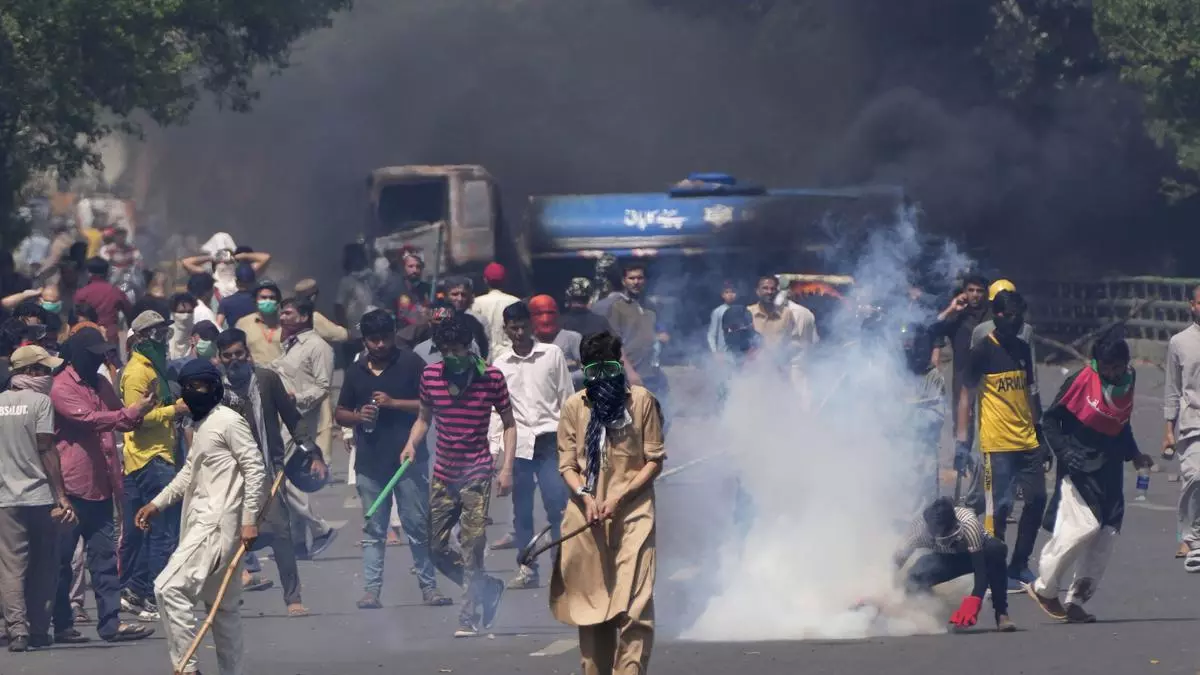by FARAH ZIA

There is a crisis of authority within the judiciary, parliament, and the armed forces.
Things have come to a head in Pakistan, and no one appears to know what to do about it. There is complete political and economic breakdown; everything is in disarray. To be fair, politics here does not allow for a dull moment. But recent developments, in particular of the last 18 months, have led to a vortex of instability, which played out in a shocking and anarchic way on the streets on May 9.
Shocking, yes. Unexpected? No.
A red line was crossed for the supporters of the Pakistan Tehreek-e-Insaf (PTI) when their leader, former Prime Minister Imran Khan, was arrested from a high court premises in the capital city of Islamabad on corruption charges. The video image of paramilitary forces dragging him into a vehicle was soon followed by a pre-recorded video message by him going viral, where he asked his followers to come out to seek haqeeqi azadi (real freedom) in his absence. It was the supporters’ turn to cross some red lines: they took to the streets, engaged in violent protests across the country, and vandalised and set on fire military residences, checkposts, and symbols, apart from some state properties.
The “revolution” was WhatsApp-ed and YouTube-d for a good few hours before the government stepped in and slowed or shut down Internet connectivity for everyone.
The news that began to trickle in after that brought small ironies in its wake—that the corps commander’s house attacked in Lahore is called “Jinnah House” because it originally belonged to the country’s founder; and that a “Constitution Convention” celebrating 50 years of the 1973 Constitution was being held in the federal parliament while outside, the city was under siege.
PTI protest
Like it or not, and no matter how the state penalises the miscreants, the PTI has set new standards of political protest, and anything less than what the enthusiastic party workers have already achieved would appear dull or inconsequential in future.
Consider, for instance, the decision by the coalition parties in government—both the Pakistan Democratic Movement and the Pakistan People’s Party—to stage a sit-in in front of the Supreme Court on May 15 to protest against what they consider the consistently partisan acts of the judiciary. It doesn’t look like an image you would want to forward on WhatsApp, does it?
This is an untenable position for a country professing to be a constitutional democracy. More importantly, forsaking legal methods of protest in favour of vandalism does not bode well for the teetering economy, where inflation stands at 40 per cent and where, for now, there may be reliance on VPNs to access news or conspiracies-as-news but the IT-related industries have already suffered losses to the tune of billions of rupees.
Clearly, something has to give way. Before that, some context is in order.
The 50-years-of-Constitution celebrations apart, political stability has remained fragile all through the past 50 years, marked by at least two terms of military rule, each a decade long, and no prime minister being allowed to complete their five-year tenure. Three governments, from 2002 until 2018, completed their terms even if the prime ministers were changed. But the last government led by Imran Khan was unseated through a vote of no confidence (VONC) when it still had over a year left to govern.
Frontline for ore
